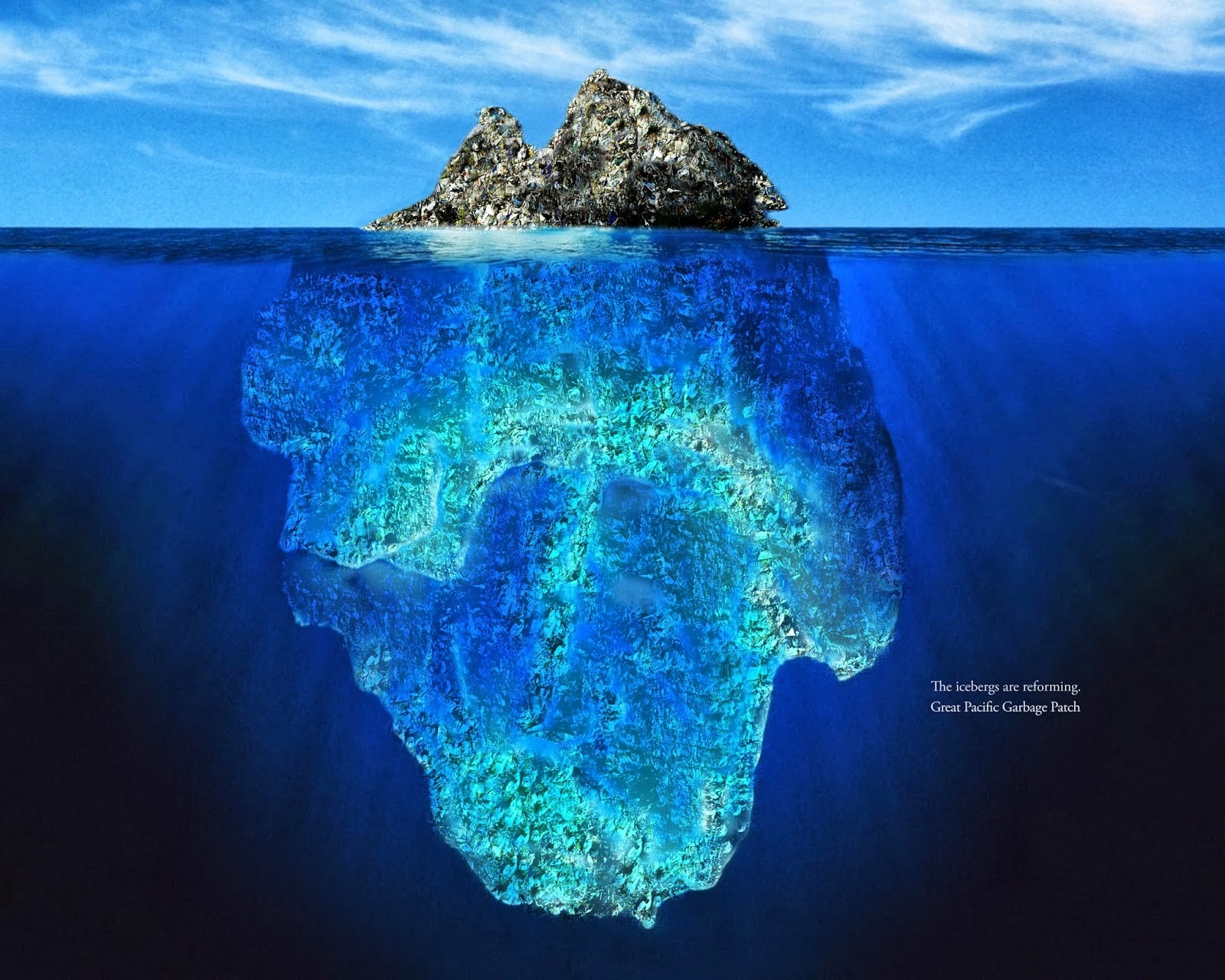This is why cats hate us. (Don’t mind me. I am still trying to get over my feline-phobia)
So, somewhere in the North Pacific, there’s a giant floating patch of garbage thousands of miles wide. It contains millions of tons of plastic and is estimated to take up an area the size of Alaska. Further, Millions of metric tons of plastic enters the ocean every year.
We don’t care, do we?
For thousands of years humans have existed on Earth, but it is only in the last 100 or so that plastics have entered our lives. These days you can barely go a minute without touching something made from some kind of plastic.
We’re ignorant of its dangers, and we haven’t learned properly to fear or to respect it.
Charles Moore, the sailor who brought the giant vortex of plastic debris floating in the north Pacific ocean to our attention, now says there is another enormous plastic patch growing in the South Pacific. The founder and research director of the Algalita Marine Research and Education Foundation, is fresh off of a six-month excursion investigating plastic pollution in the South Pacific.
Moore and team report that they confirmed the existence of this second major
gyre as part of a six-month research trip off the coast of Chile earlier this year.The good news, if you can even call it that, is the source of the plastic in this plastic patch seems to be primarily from commercial uses as opposed to litter of consumer items.
The Great Pacific Garbage Patch, also known as the Pacific trash vortex, spans waters from the West Coast of North America to Japan. The patch is actually comprised of the Western Garbage Patch, located near Japan, and the Eastern Garbage Patch, located between the U.S. states of Hawaii and California.
The entire Great Pacific Garbage Patch is bounded by the North Pacific Subtropical Gyre. An ocean gyre is a system of circular ocean currents formed by the Earth’s wind patterns and the forces created by the rotationof the planet.
The area in the center of a gyre tends to be very calm and stable. The circular motion of the gyre draws debris into this stable center, where it becomes trapped.
For instance, a plastic water bottle discarded off the coast of California, takes the California Current south toward Mexico. There, it may catch the North Equatorial Current, which crosses the vast Pacific. Near the coast of Japan, the bottle may travel north on the powerful Kuroshiro Current. Finally, the bottle travels westward on the North Pacific Current. The gently rolling vortexes of the Eastern and Western Garbage Patches gradually draw in the bottle.
For many people, the idea of a “garbage patch” conjures up images of an island of trash floating on the ocean. In reality, it’s mostly made up of the microbeads and plastic fibers that get washed out to sea when we take a shower or do laundry, along with the bits of plastic that break off of larger items.
Moore used a device called a manta trawl to scoop up plankton, the tiny plants and animals that are a key food source to many animals such as whales and fish, along with whatever debris are large enough to get stuck.
When the team dragged the trawls up, Moore and his colleagues sort out their catch to find more plastic than plankton.
The animals that pass through the gyres depend on plankton. But instead, they’re finding—and eating—plastic. This is bad, not just because plastic isn’t particularly nutritious, but because ocean plastics suck up chemical pollutants.
These chemicals—some of which are now linked to hormone disruption and cancers—are eaten by fish, they eventually make their way up the food chain. Moore says that the first albacore that they pulled up on their trip into the patch had plastic in its stomach.
“If plastic is the new god,” says Moore, “we haven’t been treating it with the fear and the respect that it’s due. We’ve been treating it as throw away—as trash. But we’re going to have to learn to fear plastic, because it’s extremely dangerous, both to our health and to the health of the ecosystem that we live in.”
Therefore, long story short, the only solution is to cut down on plastic pollution—by using less, but also by closing the loop. We need to make sure the plastic we use doesn’t end up in the waste stream in the first place.
It’s nuts, yet even in this environmentally enlightened world, that we are arguing over policies to curb even the worst ocean litter offenders. Hopefully, it won’t take the discovery of yet another giant plastic garbage patch to get some action to turn off the plastic faucet flowing into the ocean.
































